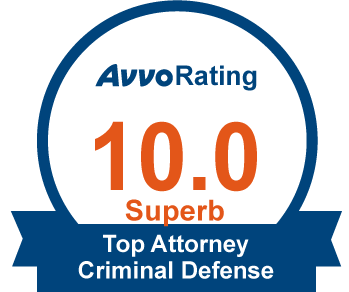The crime of assault occurs when you threaten or attempt to hurt a person and have a present ability to do so. Prosecutors file charges even if the alleged victim does not sustain an injury. Although simple assault charges result in lenient penalties, you can face severe penalties for assault if the victim of your crime is a protected person, like a school worker. If you knowingly assault a school worker using a dangerous weapon in San Diego County, the district attorney will push hard to obtain a conviction and the most severe penalties for the offense.
However, we can help you fight your charges for a favorable result at the Law Offices of Anna R. Yum. We understand that you could face false accusations, commit the crime by accident, or defend yourself or another person. Instead of paying for the crime you did not commit or did not intentionally commit, we can build a solid defense against your charges. We will also ensure you understand your charges and options better and successfully navigate the complex legal process.
Free Consultation (619) 233-4433
The Legal Definition of Assault With a Deadly Weapon on a School Employee
Under California law, assault occurs when you unlawfully attempt to use violence or cause fear of violence on another assault. The simple form of assault does not involve any weapons or result in injury or fear of harm. However, the crime is punishable by law. The prosecutor considers your intent, ability to harm the other person, knowledge that the other person could be hurt, and the fear experienced by the other person to build a case against you. If they successfully prove all the elements of your crime during the trial, the court gives a guilty verdict.
The aggravated form of assault has a slightly different legal definition from simple assault. It includes the assault of certain persons who enjoy the law’s protection, like children, older adults, persons living with disabilities, the police, and other peace officers. School employees are also protected under the law against assault, especially by parents and the students they care for. Aggravated assault also includes the use of a weapon to commit the crime. Although assault does not always result in actual harm, threatening to harm a protected person using a deadly or dangerous weapon can worsen your legal situation.
The law against assaulting a school employee using a deadly weapon is under PC 245.5. It applies to anyone who does any of the following:
- Knowingly assaults a school worker using any deadly weapon other than a gun in a manner that will likely result in a significant bodily injury. The lethal weapon can be a knife or any other dangerous weapon. The school employee must be engaged in performing their duties during the commission of this crime.
- Knowingly assaults a school employee with a gun while the school employee is engaged in performing their duties.
- Knowingly assaults a school worker using a taser or stun gum while the employee is performing their duties as a school employee.
Here are examples of incidents that could result in charges under this statute:
- An angry parent storms their son’s principal’s office holding a knife after their son was suspended for unlawful possession of a controlled substance
- An angry man follows his neighbor to his workplace in a local school and shoots his gun at him and his co-workers
- A desperate male on drugs follows a school teacher inside a school and threatens to use a stun gun on the teacher if she does not surrender her bag to the man.
If you are arrested and charged with assaulting a school worker using a dangerous weapon, you deserve a fair trial. The law allows you an opportunity to defend yourself against the charges to ensure a fair trial. However, the prosecutor bears the burden of proof in all criminal cases. They must prove all elements of the case beyond a reasonable doubt for the court to give a guilty verdict. Here are the elements of this crime that the prosecutor must prove for the judge to convict you under PC 245.5:
- You committed the crime of assault.
- You used a dangerous weapon in the commission of that crime
- The victim of your assault was a school employee
The Crime of Assault
PC 240 of California law defines assault as an unlawful attempt, together with a present ability, to harm another person. It occurs when you willingly and directly apply force to another person. You should be aware that your actions will likely hurt the other person.
Since assaulting a school worker with a dangerous weapon is an assault offense, this is the first element that the prosecutor must prove beyond a reasonable doubt. Your actions must satisfy the legal definition of assault.
A Deadly Weapon
Additionally, the prosecutor must demonstrate that you used a deadly weapon to accomplish the assault crime. A dangerous weapon is any object that will likely cause severe bodily injury or death when used on a person. Examples of deadly weapons prohibited under this statute include deadly weapons like knives, guns, tasers, or stun guns. Remember that threatening to use a Taser gun on a school employee is enough to satisfy the requirements of this crime. The prosecutor does not need to prove that you used the weapon on the school employee or injured them in any way.
A School Employee
A school employee is any person working for a school district or school. It could be a teacher or a member of the non-teaching staff. The person can be employed on a permanent or temporary basis. What matters is that they were currently working for a school district or school at the time of the crime and were performing their duty when the crime occurred. This means even a part-time school employee is covered under this statute.
Thus, you will face charges under PC 25.5 for assaulting a school counselor, nurse, teacher, tutor, office secretary, janitor, school custodian, or lunch person with a dangerous weapon. If the school employee was off-duty at the time, or the crime happened outside the school while the employee was running a personal errand, you will not face charges under this statute. However, the prosecutor can still file assault charges against you under PC 240.
A Willful Act
The assault of a school employee using a dangerous weapon is a willful offense. This means prosecutors only file charges if you commit the crime willfully and not accidentally. You must have picked the deadly weapon and attempted to harm the person with it, knowing that doing so would put their safety at risk. The prosecutor must demonstrate that your actions were willful for the judge to deliver a guilty verdict.
Penalties for a Conviction Under PC 245.5
Assault with a dangerous weapon on a school employee is a wobbler offense, meaning that the prosecutor can charge it as a felony or misdemeanor, depending on the facts of the case and a defendant’s criminal history. Your exact charge will also depend on the type of deadly weapon you use to commit the crime. Whether you face a misdemeanor or felony charge under this statute, the penalties will be severe and life-changing.
If the deadly weapon you use for the assault is any other weapon other than a firearm, the judge will likely sentence you to the following penalties:
- Three, four, or five years in state prison for a felony conviction
- A maximum of one year in jail for a misdemeanor conviction
If you use a firearm to assault a school employee, you will likely receive the following penalties upon conviction:
- Four, six, or eight weeks in state prison for a felony conviction
- A maximum of one year in jail for a misdemeanor conviction
If the weapon you used for the assault was a Taser or stun gun, you will likely receive the following penalties after a conviction:
- Two, three, or four years in state prison for a felony conviction
- A maximum of one year in jail for a misdemeanor conviction
Penalties for Multiple Crimes
A sentencing enhancement applies in cases where there are aggravating factors. If the judge applies a sentencing enhancement in your case, you will likely face additional penalties in addition to the penalties you receive for the crime.
For example, if you targeted more than one school employee at the same time, and all your targeted employees were performing their duty during the assault, you will face separate assault charges for all your victims. Thus, if the prosecutor finds you guilty of assaulting a school worker with a lethal weapon, you will receive separate penalties for all your victims, increasing the penalties you receive for the crime by a significant margin.
Aiding and Abetting
Suppose you helped a person plan or execute an assault on a school employee. In that case, you will also face criminal charges for aiding and abetting a felony or misdemeanor (depending on the charges the person you helped will face). Aiding and abetting a crime is severely punished in California. You could receive a similar sentence as the person who executed the crime. For example, if you knowingly provided the deadly weapon that was used to assault a school employee, you are as guilty as the person who committed the crime.
Civil Lawsuits
Some victims of assault with a deadly weapon do not just file criminal charges against their attackers. They proceed to file civil lawsuits against them to recover damages incurred due to the assault. Your victim or victims are entitled to bring a civil case against you if they suffered damages due to your actions. When this happens, a civil court judge could compel you to pay full compensation for all their damages.
Examples of damages a victim of assault can recover include financial damages to seek counseling or treatment for the extreme fear or trauma they suffered. The judge can also award punitive damages if your actions were grossly or criminally negligent.
Your Gun Rights
Some criminal convictions affect some of the rights and privileges you enjoy as a Californian. For example, a felony conviction for any crime will affect your gun rights. Adult Californians can freely apply for permits to use, possess, or purchase firearms. However, there is usually an exception to this provision. If you are a convicted felon, you lose the right to a gun and must sell or surrender any firearm in your possession. Depending on the gravity of your charges, you can lose these rights permanently or for a few years.
Other Consequences of a PC 245.5 Conviction
A conviction for assault leaves you with a severe criminal record that will significantly affect all aspects of your life. The damaging criminal record is publicly available and accessible to anyone who runs a background check on you, including potential employers, landlords, loan lenders, and insurance companies. It means that your criminal background will affect your ability to enjoy some privileges or access some services.
For example, a potential employer can deny you an employment opportunity regardless of your qualifications because of your criminal background. You could also face challenges obtaining a professional license even after serving your sentence. Some landlords do not rent or lease to ex-convicts. This makes it challenging to find suitable places to live. An insurance company can increase its rate once it discovers your criminal background. The same applies to loan lenders and other service providers.
How To Defend Yourself Against PC 245.5 Charges
The consequences of a conviction for assaulting a school worker with a deadly weapon are severe. The severe penalties and other life-altering consequences after the convictions evidence this. In addition to serving a lengthy jail or prison sentence and paying a hefty court fine, some consequences will follow you for the rest of your life. Fortunately, you can avoid all these consequences by fighting your charges during the trial. Doing so could compel the judge to drop or reduce your charges.
However, you need the help of a competent criminal defense attorney to build a solid defense in your case. Here are some of the strategies an attorney can use for a reasonable outcome:
The Victim Is Not A School Employee
Charges under PC 245.5 only apply to anyone who assaults a school employee using a deadly weapon. The victim must be a school employee working permanently or temporarily in a school or for a particular school district. The prosecutor must demonstrate all these facts before a court so that the judge can give a guilty verdict in your case.
If the alleged victim lied about being a school employee or was already fired, you can use this defense to obtain a reduced sentence. Remember that a school employee is a protected person under the law. If you assault them while they are performing their duty, your penalties will likely be more severe than what you would receive for assaulting a non-protected person. Your attorney can use this defense to compel the judge to be lenient when sentencing you for assault. However, you must provide irrefutable evidence to support your claims.
You Acted Under Duress
If you threaten to harm a school employee because someone else made you do it, you can use this strategy to obtain a favorable outcome in your case. Acting under duress means you did not intend to commit the crime but had to do it because someone else forced you into it. It could be that the school employee has an unsettled score with a more powerful person who did not want to harm or threaten them in person. The perpetrator used you to settle the score, resulting in your arrest and criminal charges.
A remarkable criminal attorney will not allow you to pay for a crime you did not willingly commit. They will do everything in their power to obtain a charge dismissal. For example, they can demonstrate that you did not know or had no encounter with the alleged victim before the crime. They can also communicate with you and the perpetrator to show that you have unknowingly committed the crime. The judge will dismiss your charges if this defense strategy works.
The Police Had No Probable Cause For Your Arrest
The 4th Amendment of the U.S. Constitution requires the police to have probable cause to arrest and investigate a person for a crime. It is unlawful for the police to arrest a suspected offender without probable cause. If this happens, you can compel the judge to dismiss your arrest and all the evidence the police gathered after your arrest.
For an arrest to be valid, the police must obtain an arrest warrant after receiving a report about the assault. They can also arrest you if they were at the crime scene and witnessed your actions. If this does not happen, you can easily challenge your arrest for a favorable result.
You Are Mistakenly Accused
If someone else mistakenly accuses you of assault with a deadly weapon, you can be sentenced to a crime you did not commit in the first place. However, an experienced criminal attorney can help clear your name by providing the evidence the court needs to determine the case.
A mistake of facts in a criminal case can happen if a person commits a crime and you are accused because you resemble the perpetrator or had an earlier altercation with the alleged victim. This is common with crimes committed in the dark or when the perpetrator wears a mask. The victim can mention your name to the police out of suspicion without being sure you are the perpetrator.
Your attorney can use your alibi to demonstrate that you did not commit the crime in the first place. They can also provide surveillance footage to show that the perpetrator is different in structure and built from you. A skilled attorney will use any evidence to ensure that the court dismisses your charges.
PC 245.5 and Related Charges
Three crimes under California law are closely related to assault with a deadly weapon on a school employee. These crimes are:
PC 245(a)(1)
This is the law that prohibits assaulting another person with a deadly weapon. It is a general offense that prohibits the use of deadly weapons like guns and knives to threaten or attempt to harm another person. This offense is different from PC 245.5 because the latter is particular since it only protects school employees.
A convict for assault with a dangerous weapon can result in a four-year prison sentence. This makes it a more lenient offense than PC 245.5.
PC 245(a)(2)
This law prohibits the commission of an assault using a firearm. It is also a general offense compared to PC 245.5, as it protects everyone else against assault with a gun. The crime is also a wobbler offense, with a maximum penalty of four years. This makes it more lenient than PC 245.5 but more severe than PC 245(a)(1).
PC 12022.4
This law prohibits providing or attempting to provide a person with a gun or dangerous weapon to help them commit a felony. It applies to people who help others commit grave felonies using firearms.
This law mainly applies during sentencing enhancement, whereby the judge adds a maximum of three years to your underlying sentence.
Find an Experienced Criminal Defense Attorney Near Me
A criminal charge for assault with a deadly weapon on a school employee in San Diego County can result in life-changing penalties. However, you can partner with an experienced criminal attorney to push for a favorable result. An attorney can also help you navigate the complex legal processes and defend your civil rights.
At the Law Offices of Anna R. Yum, we understand how difficult it is to fight criminal charges in California. That is why we offer solid and reliable defense for defendants who wish for a more favorable outcome in their cases. We can use our best legal defense strategies to help you avoid a severe conviction. We can also appeal your case if the result is not satisfying. Call us at 619-493-3461 for further details about our service and your charges.











